[Larkspurs: The Genus Delphinium East of the Cascade Mts. of Oregon and Washington]
Blue Mountain Larkspur, Dwarf Larkspur, Slim Larkspur
Delphinium depauperatum
Synonyms: Delphinium cyanoreios, Delphinium diversifolium, Delphinium diversifolium ssp. harneyense, Delphinium diversifolium var. harneyense
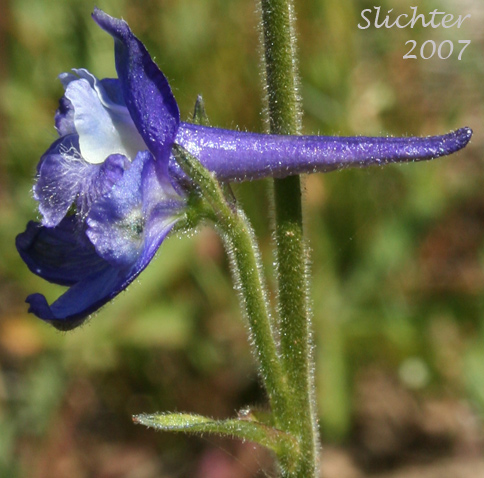
The photo above shows a close-up of the flower of dwarf larkspur. Note the pedicel
which is shorter than the spur and held upright, close to the stem. Note also
the patch of white hairs on the lower (blue) petals, which are above the stamens.
Photographed about along Hat Pt. Road one mile south of Memaloose in the Hells Canyon National Recreation Area...........July 11, 2007.
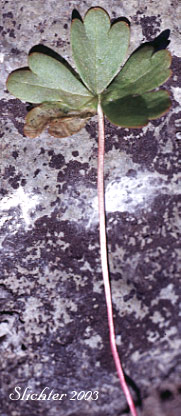 The
photo at right represents a basal leaf of dwarf larkspur. Photographed
along the road to Blue Sky, Hart Mt. National Antelope Refuge..........June 27.
2003.
The
photo at right represents a basal leaf of dwarf larkspur. Photographed
along the road to Blue Sky, Hart Mt. National Antelope Refuge..........June 27.
2003.
Characteristics:
Dwarf larkspur is also known as barren-ground larkspur. It is an attractive
perennial wildflower with usually one erect, simple to slightly branched stem
from 30-60 cm high. The lower stems range from glabrous to hairy but are nearly
always covered with glandular hairs within the inflorescence. The leaves are
mostly basal or on the lower stems and have long petioles as shown in the diagram
at right. The blades range from 3-6 cm wide and are nearly parted into 3 broad
lobes, which are further shallowly 3-4 lobed. Several small, linear, bract-like
leaves are found higher on the stems.
The inflorescence is loosely to closely flowered with 5-20 flowers. The pedicels
are usually shorter than the spurs (except perhaps those of the lowest flowers)
and are typically nearly erect and close to the stem or ascending. The blue
sepals are oblong-ovate in shape with rounded to acute tips. They are cuped
forward or may be flared. Individual sepals range from 9-12 mm long while the
spur is 13-15 mm long. Both the spur and calyx are covered with gland-tipped
hairs. The smaller petals are blue to nerly white, the lower pair with a central
tuft of whitish hairs and margins which are finely and irregularly toothed (See
photos.) The fruits are 11-17 mm long and typically covered with glandular hairs
(See photo below.).
Habitat:
Dwarf larkspur is found in moist meadows or riparian areas which
dry by mid-summer. It is found with sagebrush in the lowlands and in subalpine
and alpine meadows in the mountains.
Range:
Dwarf larkspur is found from southeastern Washington (Asotin
County) south to Crook County and eastern Lake County in north-central and south-central
Oregon respectively. It is found further south to northeastern California and
eastward to central nevada and western Montana.
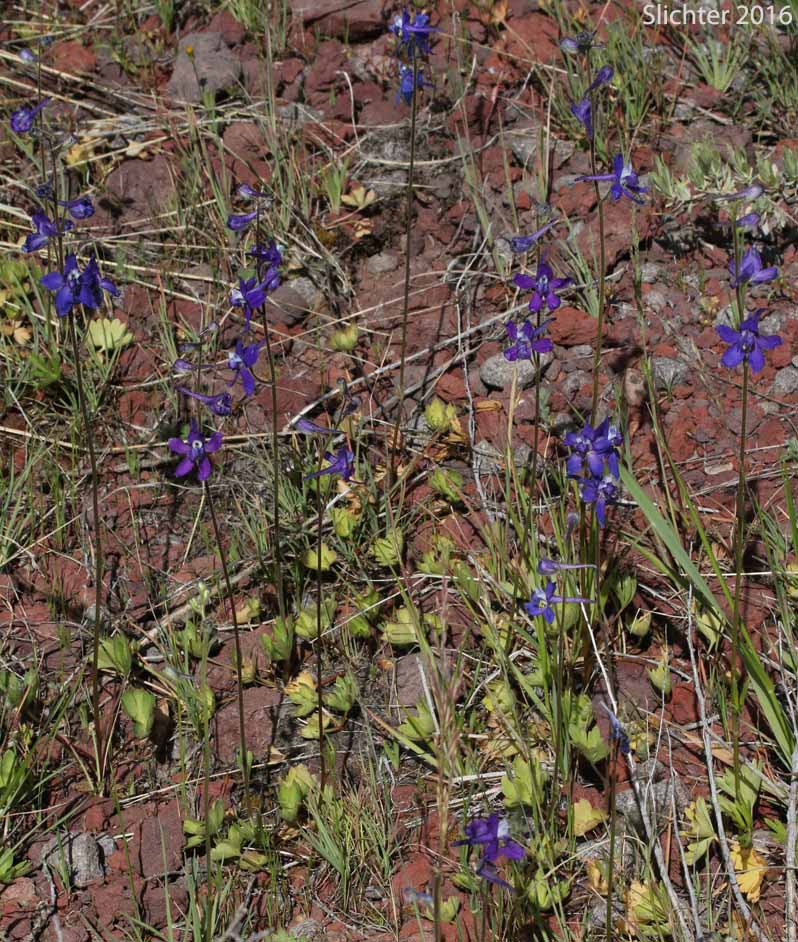 -
- 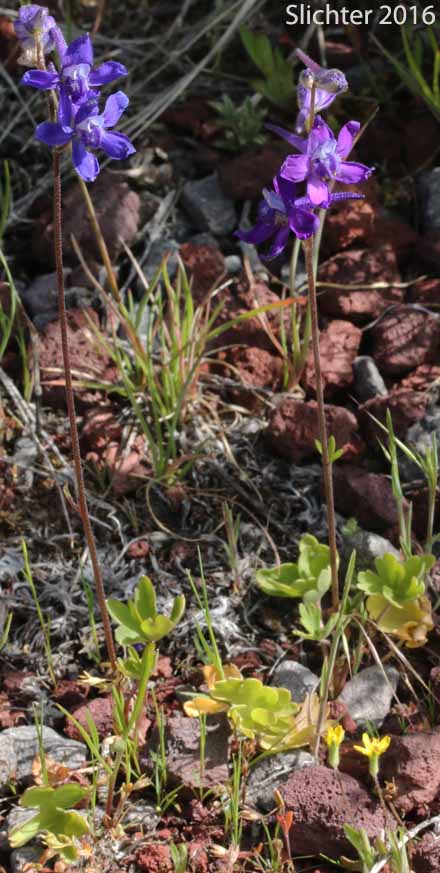 -
- 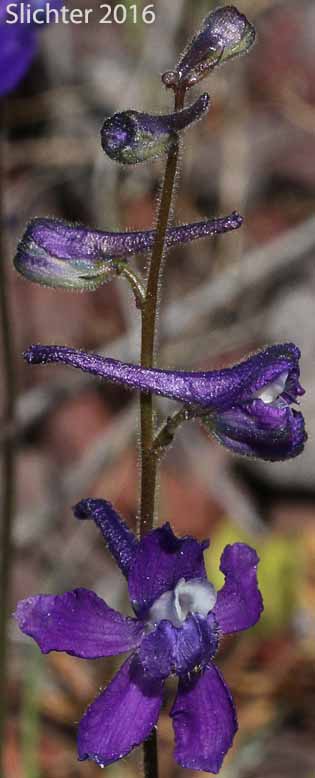 -
- 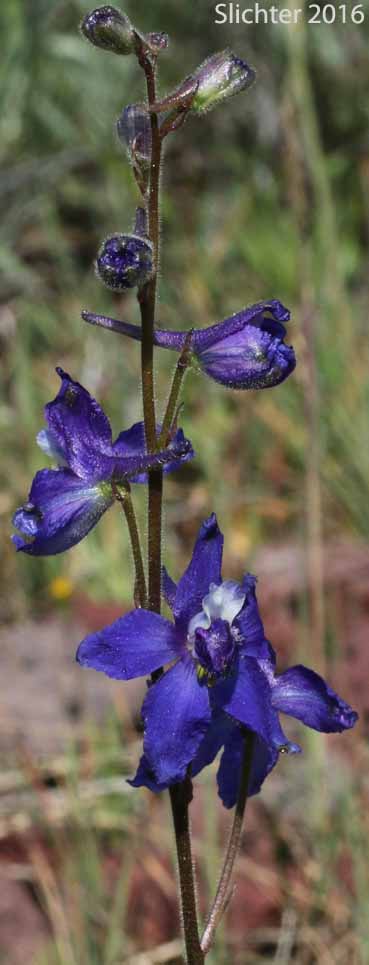
Dwarf larkspur as seen in bloom in vernally moist swales along FS Road #3142 in southern Thompson Valley, Fremont National Forest........May 19, 2016.
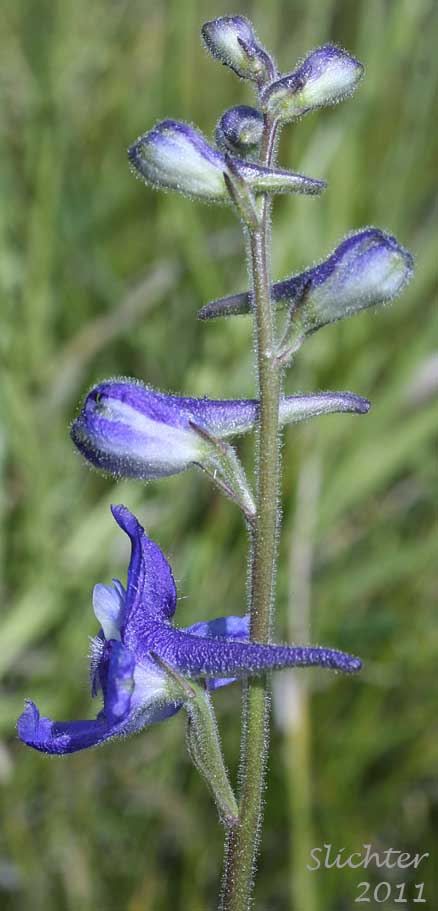 -
- 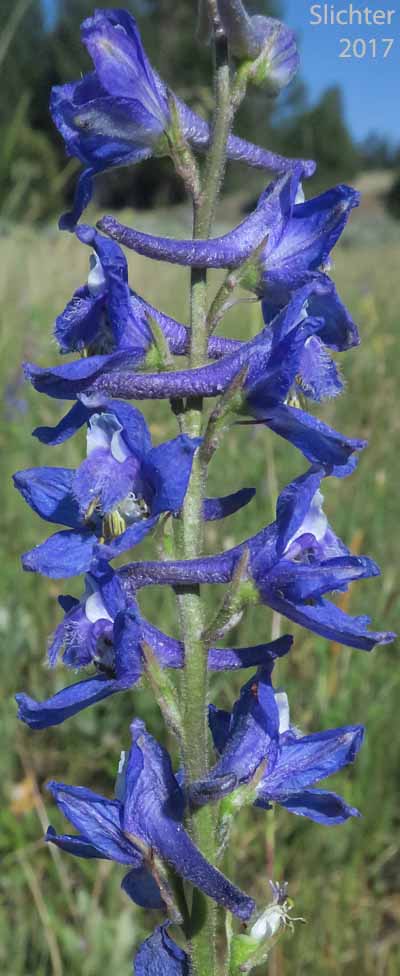
A close-up of the inflorescence (left) of dwarf larkspur.
Photographed in a wet meadow at the west side of the wildlife viewing area in Logan Valley, Malheur National Forest.........June 26, 2011. The photo at right shows dwarf larkspur blooming in a vernally moist meadow near the junction of Forest Roads 42 and 4240, Ochoco National Forest........July 13, 2017.
The photo above shows the glandular-hairy follicles of dwarf
larkspur. Photographed along the road to Blue Sky, Hart Mt. National Antelope
Refuge..........June 27. 2003.
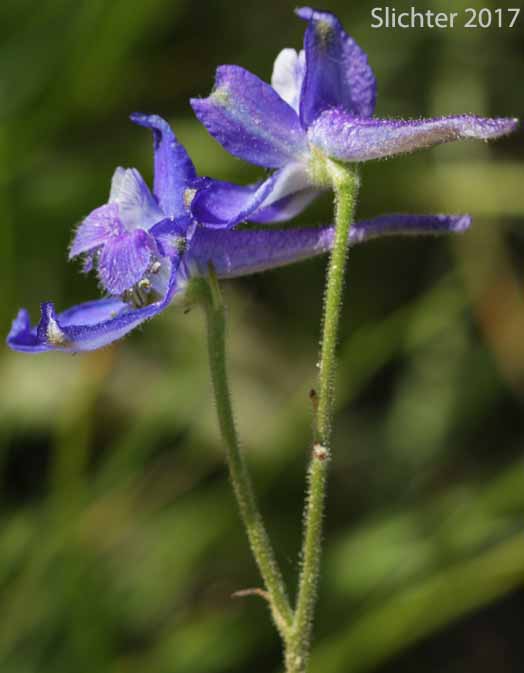 -
- 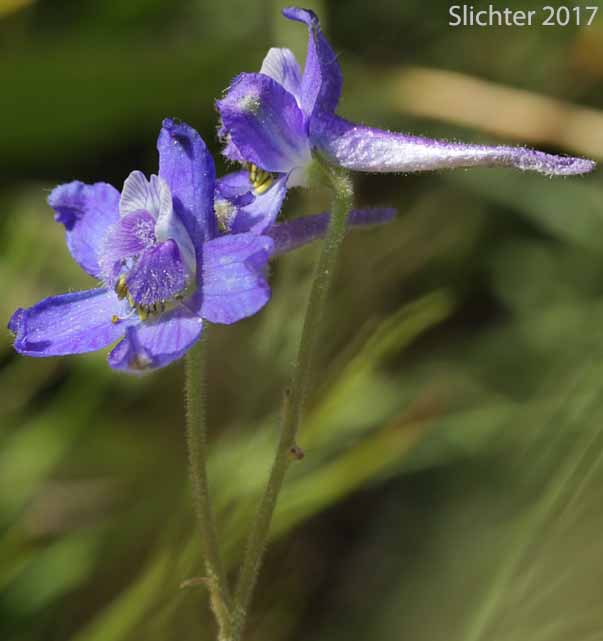
Dwarf larkspur as seen in vernally moist meadows near the junction of FS Roads 42 and 4240, Ochoco National Forest.........June 21, 2017.
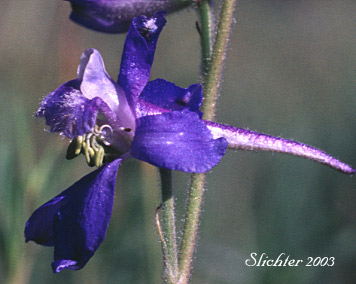
The photo above shows a close-up of the flower of dwarf larkspur. Note the pedicel which is shorter than the spur and held upright, close to the stem. Note also the patch of white hairs on the lower (blue) petals, which are above the stamens. Photographed in the Malheur NF in a meadow about 0.3 mile east of US 395 along FS Rd 3925...........June 25, 2003.
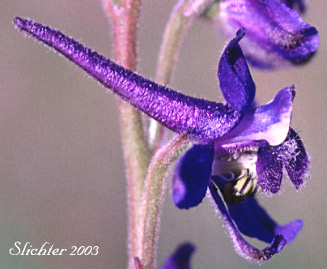
A side-view of the flower of dwarf larkspur. The spur and sepals are covered
with minute, glandular hairs.
Paul Slichter
 The
photo at right represents a basal leaf of dwarf larkspur. Photographed
along the road to Blue Sky, Hart Mt. National Antelope Refuge..........June 27.
2003.
The
photo at right represents a basal leaf of dwarf larkspur. Photographed
along the road to Blue Sky, Hart Mt. National Antelope Refuge..........June 27.
2003.
